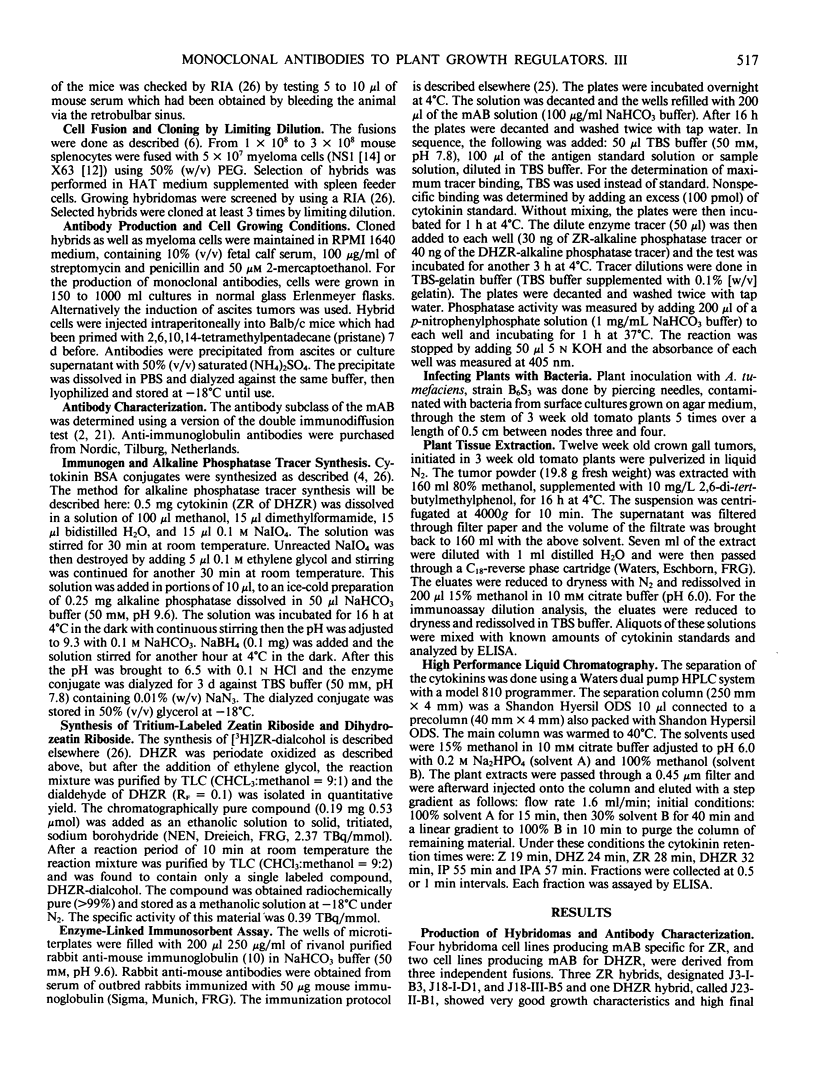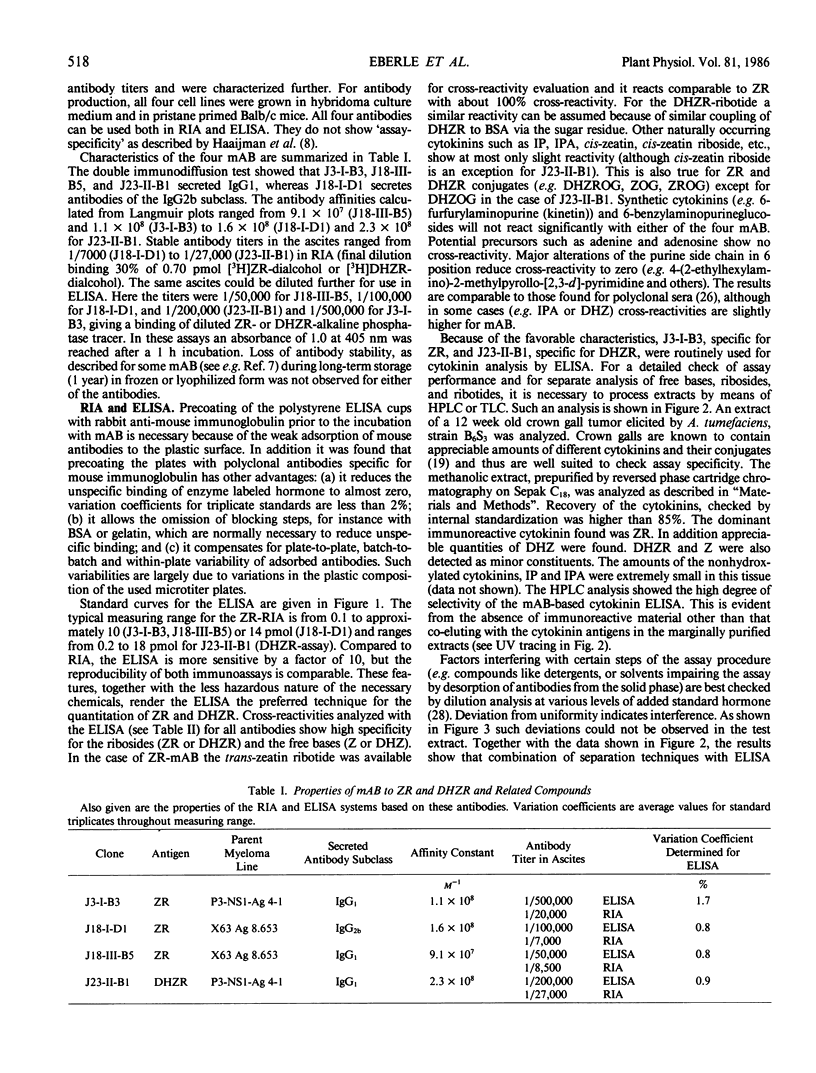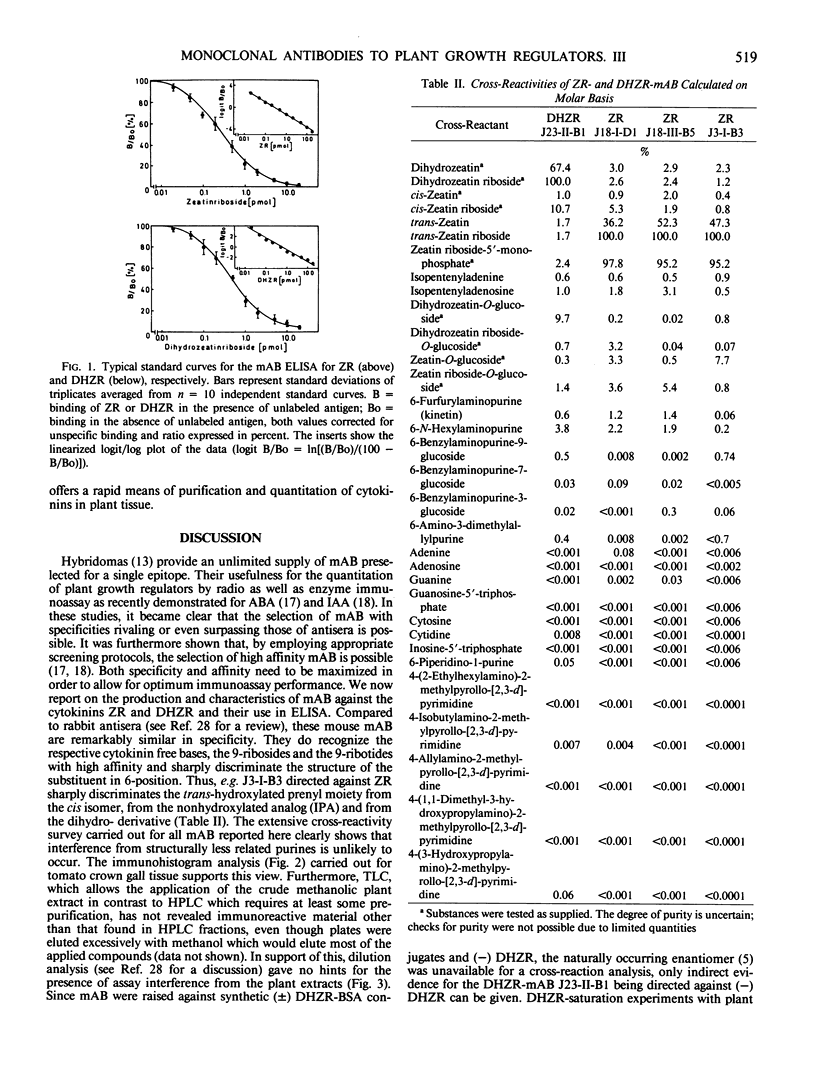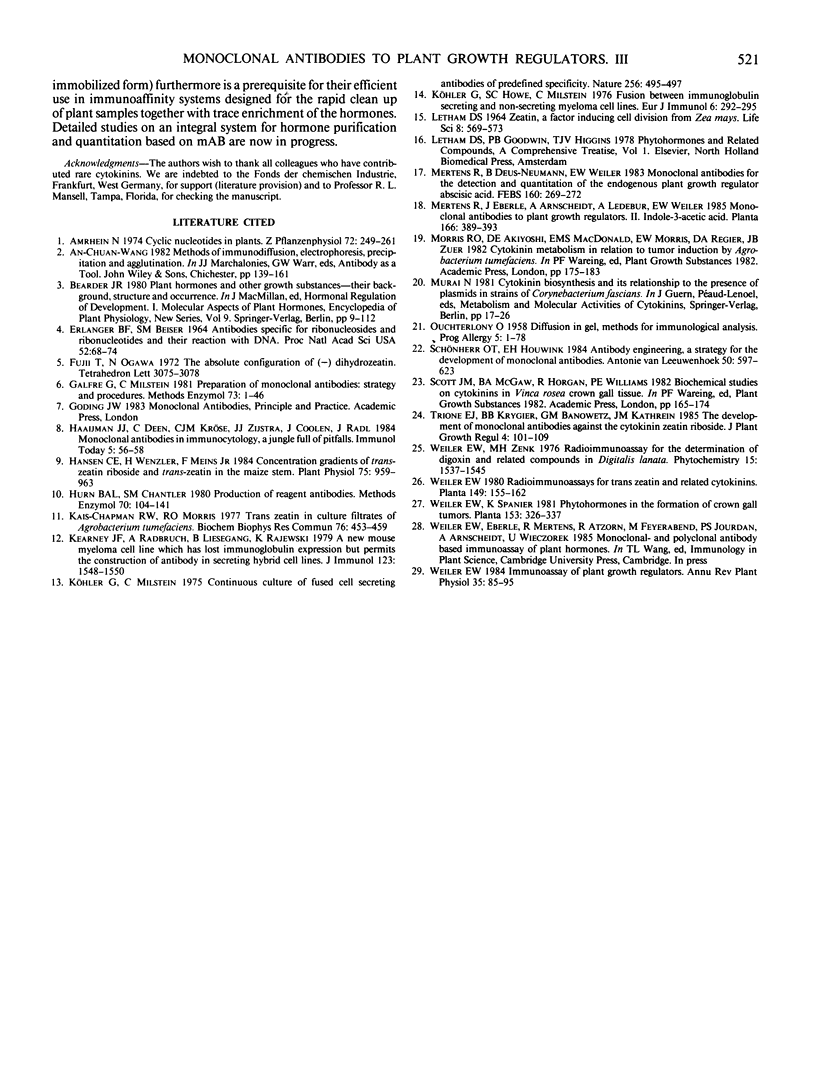Abstract
Four high affinity monoclonal antibodies, which recognize two plant growth regulators from the cytokinin group, namely trans-zeatin riboside and dihydrozeatin riboside and their derivatives are reported. Six hybridomas were produced from three independent fusions of Balb/c spleen cells with P3-NS1-Ag 4-1 (abbreviated NS1) or X63-Ag 8.653 (X63) myeloma cells. The mice had been hyperimmunized with zeatin riboside-bovine serum albumin conjugate or dihydrozeatin riboside-bovine serum albumin conjugate for 3 months. The hybridomas secrete antibodies of the IgG 1 or IgG 2b subclass and allow the detection of femtomole amounts of the free cytokinins, their ribosides, and ribotides in plant extracts. The use of these monoclonals in radio- and enzyme-linked immunosorbent assay is also discussed.
Full text
PDF





Selected References
These references are in PubMed. This may not be the complete list of references from this article.
- ERLANGER B. F., BEISER S. M. ANTIBODIES SPECIFIC FOR RIBONUCLEOSIDES AND RIBONUCLEOTIDES AND THEIR REACTION WITH DNA. Proc Natl Acad Sci U S A. 1964 Jul;52:68–74. doi: 10.1073/pnas.52.1.68. [DOI] [PMC free article] [PubMed] [Google Scholar]
- Galfrè G., Milstein C. Preparation of monoclonal antibodies: strategies and procedures. Methods Enzymol. 1981;73(Pt B):3–46. doi: 10.1016/0076-6879(81)73054-4. [DOI] [PubMed] [Google Scholar]
- Hansen C. E., Wenzler H., Meins F. Concentration Gradients of trans-Zeatin Riboside and trans-Zeatin in the Maize Stem: Measurement by a Specific Enzyme Immunoassay. Plant Physiol. 1984 Aug;75(4):959–963. doi: 10.1104/pp.75.4.959. [DOI] [PMC free article] [PubMed] [Google Scholar]
- Hurn B. A., Chantler S. M. Production of reagent antibodies. Methods Enzymol. 1980;70(A):104–142. doi: 10.1016/s0076-6879(80)70044-7. [DOI] [PubMed] [Google Scholar]
- Kaiss-Chapman R. W., Morris R. O. Trans-zeatin in culture filtrates of Agrobacterium tumefaciens. Biochem Biophys Res Commun. 1976 May 23;76(2):453–459. doi: 10.1016/0006-291x(77)90746-x. [DOI] [PubMed] [Google Scholar]
- Kearney J. F., Radbruch A., Liesegang B., Rajewsky K. A new mouse myeloma cell line that has lost immunoglobulin expression but permits the construction of antibody-secreting hybrid cell lines. J Immunol. 1979 Oct;123(4):1548–1550. [PubMed] [Google Scholar]
- Köhler G., Howe S. C., Milstein C. Fusion between immunoglobulin-secreting and nonsecreting myeloma cell lines. Eur J Immunol. 1976 Apr;6(4):292–295. doi: 10.1002/eji.1830060411. [DOI] [PubMed] [Google Scholar]
- Köhler G., Milstein C. Continuous cultures of fused cells secreting antibody of predefined specificity. Nature. 1975 Aug 7;256(5517):495–497. doi: 10.1038/256495a0. [DOI] [PubMed] [Google Scholar]
- LETHAM D. S. ZEATIN, A FACTOR INDUCING CELL DIVISION ISOLATED FROM ZEA MAYS. Life Sci. 1963 Aug;8:569–573. doi: 10.1016/0024-3205(63)90108-5. [DOI] [PubMed] [Google Scholar]
- OUCHTERLONY O. Diffusion-in-gel methods for immunological analysis. Prog Allergy. 1958;5:1–78. [PubMed] [Google Scholar]
- Press F. The suboceanic mantle. Science. 1969 Jul 11;165(3889):174–176. doi: 10.1126/science.165.3889.174. [DOI] [PubMed] [Google Scholar]
- Schönherr O. T., Houwink E. H. Antibody engineering, a strategy for the development of monoclonal antibodies. Antonie Van Leeuwenhoek. 1984;50(5-6):597–623. doi: 10.1007/BF02386229. [DOI] [PubMed] [Google Scholar]


